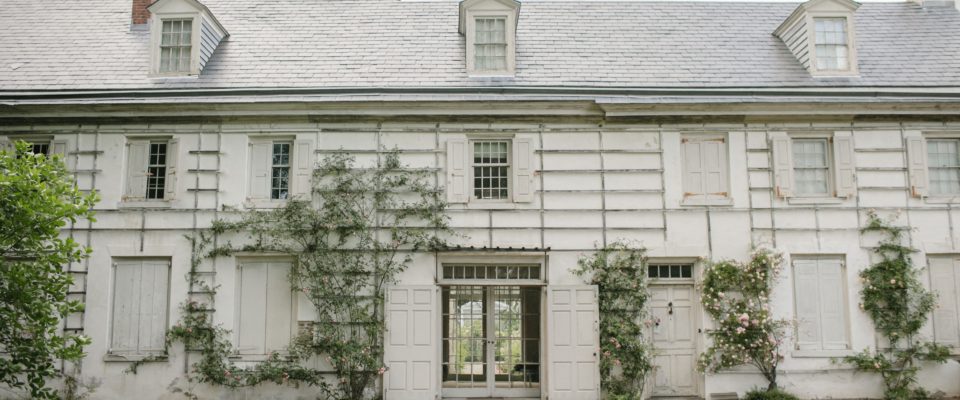House
Overview
Dating to 1690, Wyck is known as one of Philadelphia’s oldest houses, although the original log structure no longer stands. It is an assemblage of structures that evolved over time, but it has not changed since renowned Philadelphia architect William Strickland (1788-1854) renovated the first-floor interiors in 1824. Wyck House grew in parts over the course of the 18th century. The first house on the site was a one-room log structure at the present-day back of the house, built by Swiss-German immigrant Hans Milan in the 1690s. The oldest extant part of the house is the three-bay (3 windows wide) stuccoed stone section that abuts Germantown Avenue.
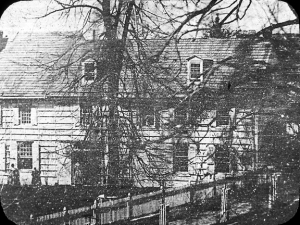
In 1824, Reuben Haines III and his wife, Jane Bowne Haines, commissioned William Strickland (architect of the Second Bank of the United States and the Merchants’ Exchange) to update the house. Strickland removed all the windows facing Germantown Avenue and erected a fireplace in the center of the gable (part of the front hall). Strickland also removed the original fireplace on the house’s north side and installed windows in the first and second stories of the north wall, which opened to the new parterre garden. Perhaps most notably, Strickland dramatically rearranged the interior spaces to create an open plan, allowing light to flood each room and bringing the pleasures of the garden inside. Right: 1840 daguerreotype of Wyck by Professor Walter R. Johnson.
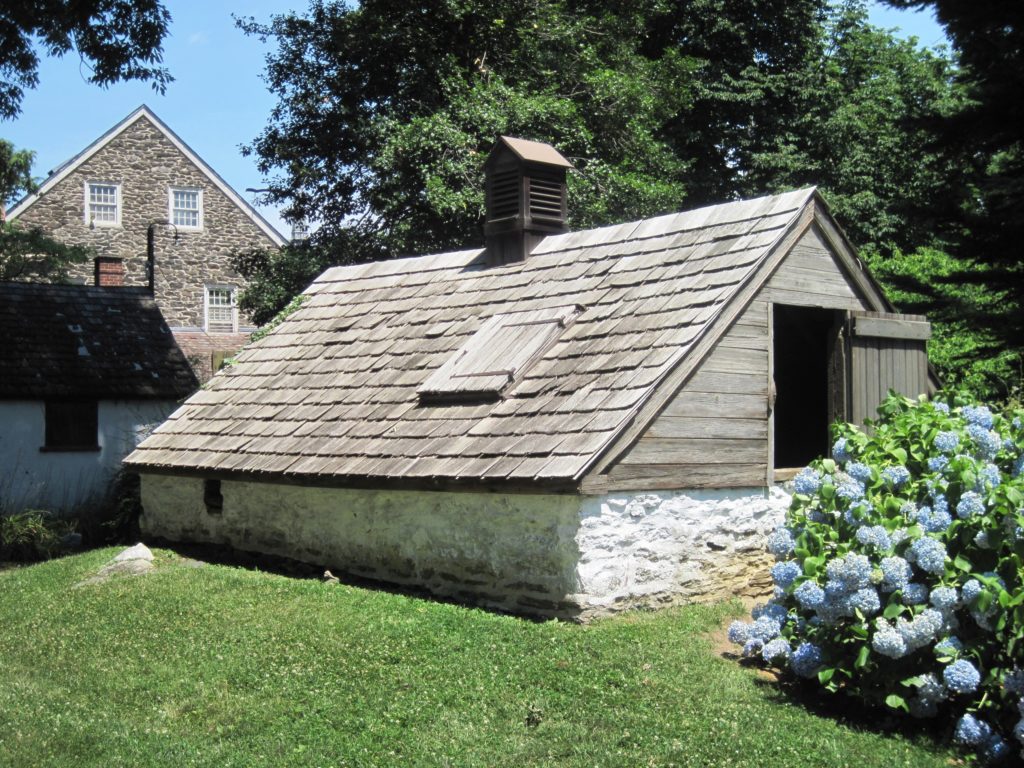
Additional buildings on site accommodated practical needs, including a coach house (1794), smoke house (circa 1797), ice house (1836), and greenhouse (1914). All of these buildings still stand. The house itself has hardly been altered since William Strickland’s 1824 interior renovation.Twentieth-century architectural efforts focused not on consolidation and growth but rather preservation. Jane Bowne Haines II was particularly devoted to preserving Wyck’s beloved rose garden, which today is considered a living treasure. The nation’s oldest rose garden, features over 50+ varieties of roses growing in their original plan. The National Park Service’s 1933 documentation of Wyck described the house as follows:
“An atmosphere of quiet, peace and contentment pervades this charming memorial of our past, and inside and out, Wyck is a delight to all who have a fondness for the old days.”
Wyck was added to the National Register of Historic Places in 1971, and was further recognized as a National Historic Landmark in 1991.
Family
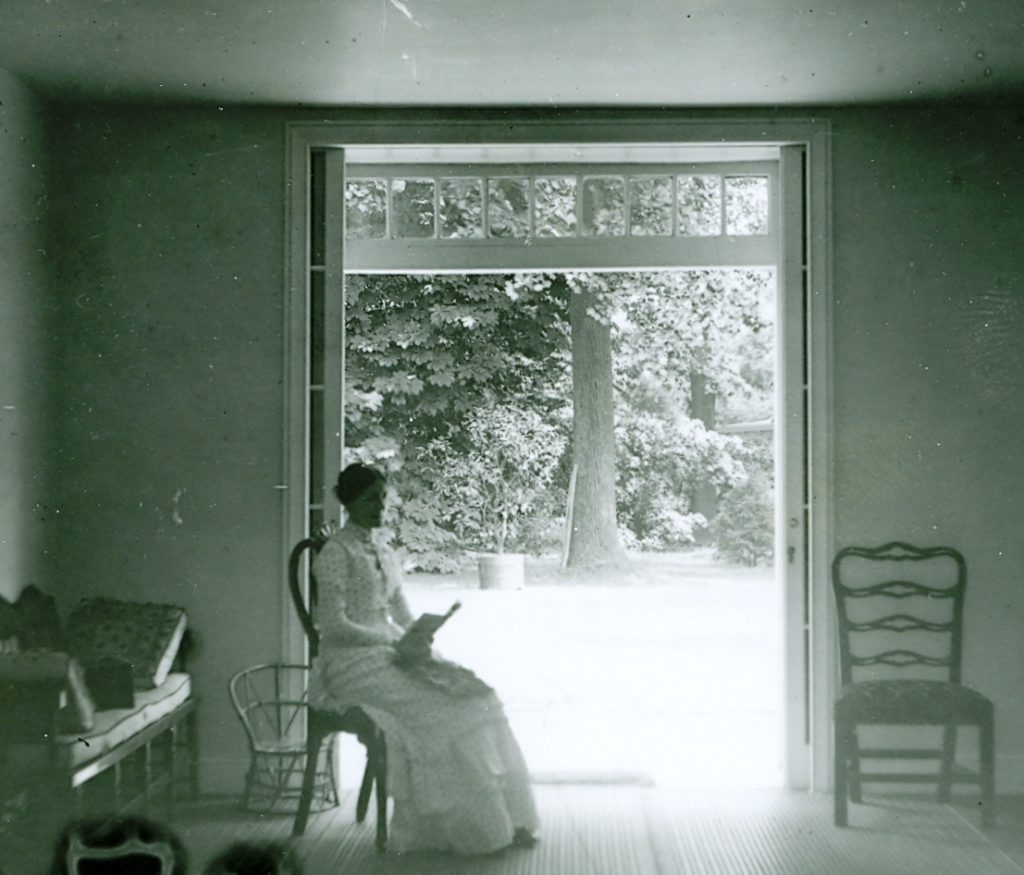
Hans Milan and his wife had a daughter, named Margaret. Margaret Milan married Dirk Jansen. Their daughter, Catherine, married Caspar Wistar, a German who became a Quaker and amassed a sizable fortune as a button maker, glass-maker, and investor in land. In the next generation, Margaret Wistar married Reuben Haines I, a brewer and merchant of English descent. Their son, Caspar Wistar Haines, continued the family business and married Hannah Marshall, a member of another prominent Quaker family. Wyck passed to Reuben and Jane Bowne Haines, and then to their youngest daughter, Jane Reuben Haines, who lived here until 1911, carefully preserving the house, furnishings, and gardens. In the eighth generation, Jane Bowne Haines II founded the first school of horticulture for women in this country, the Pennsylvania School of Horticulture for Women (today Temple University’s Ambler campus). One brother, Caspar, helped to design the Mexican railway system, while another, Robert, invented a gauge for measuring steel in rolling mills. The last owners, Mary and Robert Haines, were fruit growers; Robert patented a device to press apples for a more natural tasting juice. Wyck’s family descendants remain very involved in the life of their home and community. Left: 1905 photograph of Jane Reuben Haines.
A Focus on the 6th Generation
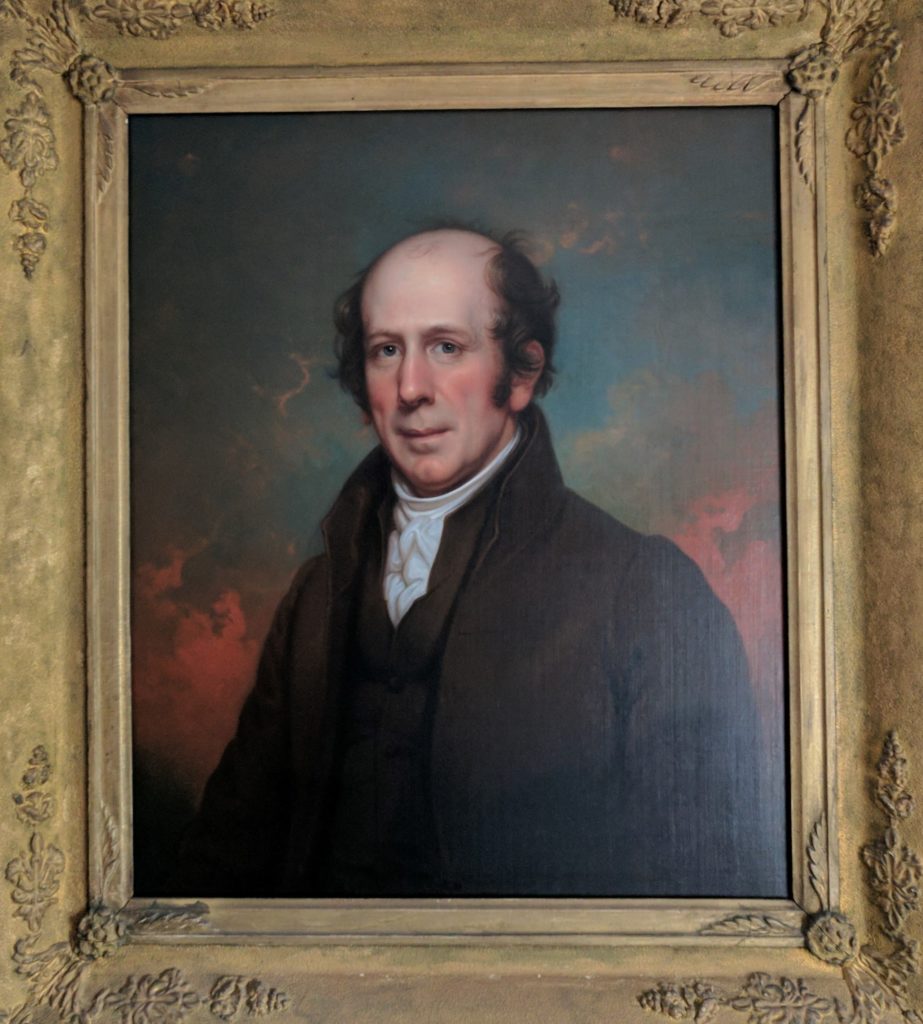
Wyck’s family personifies Philadelphia’s leadership in business, science, education, social reform, and philanthropy. For example, Reuben Haines, III (1786-1831) had much in common with his colleague from the American Philosophical Society, Thomas Jefferson. Like Jefferson, Reuben was fascinated by the rich possibilities that the new nation offered, from its natural resources to its inventive spirit. When he retired from business at the age of 23, Reuben declared his intent to devote himself to “the pursuit of knowledge and the society of genuine friends.” He conducted experiments in scientific agriculture, led school reforms, and helped to found the Academy of Natural Sciences, the Franklin Institute, and the Pennsylvania Horticultural Society. On the home front, he commissioned his architect friend, William Strickland, to renovate the then-disparate house of many parts into one fashionable Greek Revival country villa. With similar zeal, Reuben’s wife, Jane Bowne Haines, I (1790-1843), joined organizations promoting education for the poor, prison reform, and the abolition of slavery. She also transformed Wyck’s garden in the 1820s into the magnificent display of roses still enjoyed today. Right: portrait of Reuben Haines III, by Rembrandt Peale, 1832.
Fun Facts
Wyck’s third-generation-family was the Wistars, who founded one of the first glass-works in the colonies, Wistarburgh Glass, which was located in New Jersey.
This is also the family for which Wisteria, a genus of flowering plants, is named. During the Battle of Germantown in 1777, Wyck, a Quaker and pacifist household, was the site of a field hospital for the British. The Haines were the leading brewers of beer in Philadelphia in the late 1700’s. George Washington was a regular customer. The brewery started on Market Street in Philadelphia, but was moved to Germantown and stood next to Wyck’s rose garden, on what is today Walnut Lane. The Haines family was one of the incorporators of the Germantown Turnpike in 1801, now Germantown Avenue. In 1825, the Marquis de Lafayette greeted special guests in Wyck’s then newly built conservatory on a hot summer day. He visited two locations while in Germantown, Wyck and Cliveden, the site of the Battle of Germantown.
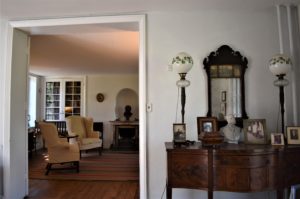
Members of the Peale family of artists and naturalists came to Wyck in 1830 to boil elephant bones with their friend, Reuben Haines, for use in an exhibit at their museum. Reuben Haines III helped found Philadelphia’s first railroad, as well the first fire company in the city to use flexible hoses. After an article was printed in House & Garden magazine about Wyck in 1902, numerous architects around the country copied Wyck and used Wyck as a model for new residences. The last family owners of Wyck, Mary and Robert Haines, used Wyck as a winter home. They spent the rest of the year at their peach and apple orchards in Berks County. Left: Through Wyck’s conservatory to the rear parlor, 2019 by Tess Frydman.

